It was a clear morning with a sharp breeze when we set off, with the sun only just appearing above the horizon it had not yet warmed the air, I had wrapped myself in a shuka to protect me from the chill. I knew it wouldn’t be long before the rays of the sun would be felt, this is the most dangerous time for fair skinned people that haven’t used plenty of sunscreen. There was as usual, when we leave the camp, many game animals to greet us; Impala, Tommi’s, zebra, warthog and because it was early and we were only just inside the park, Maasai cows.
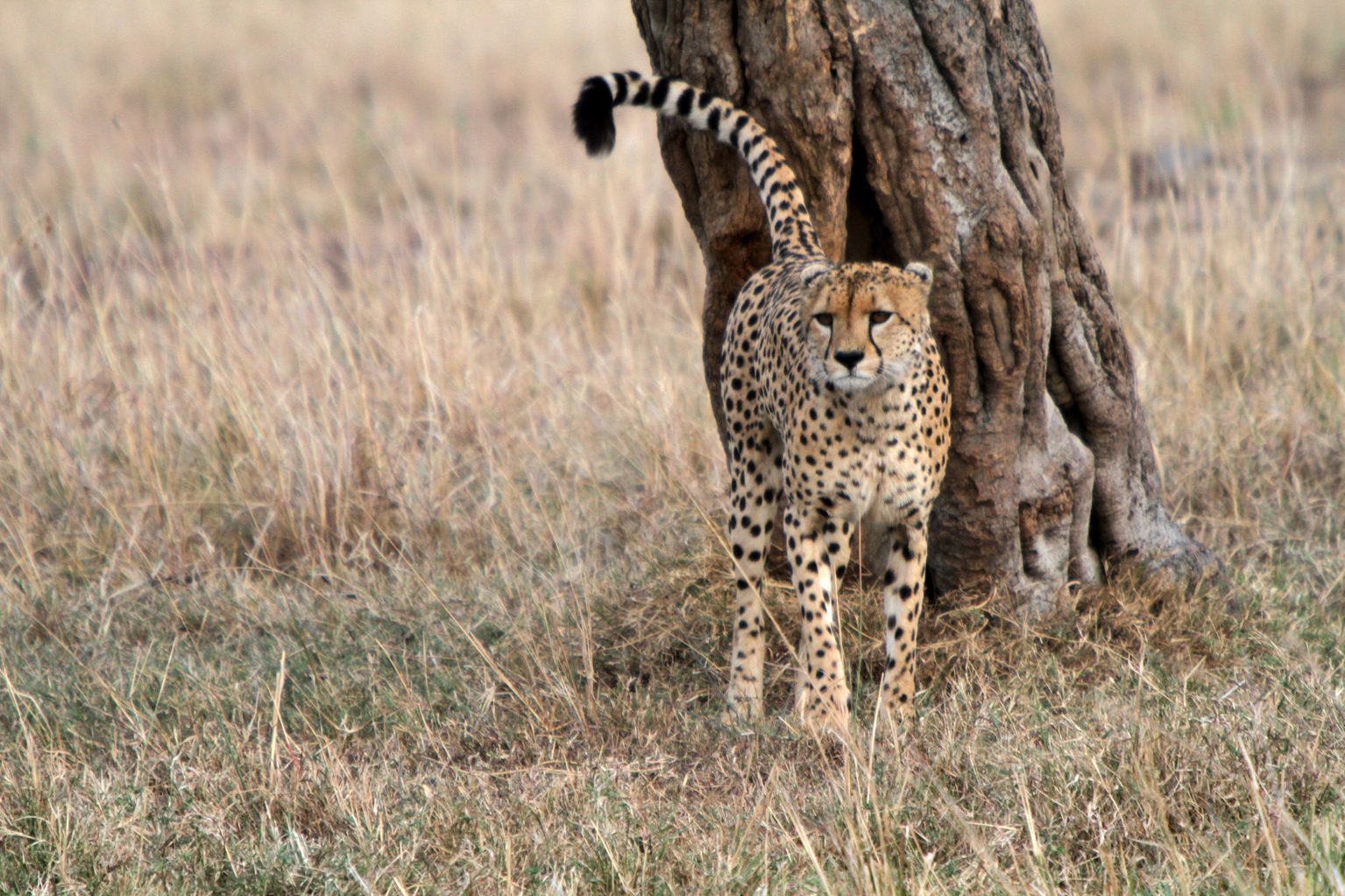
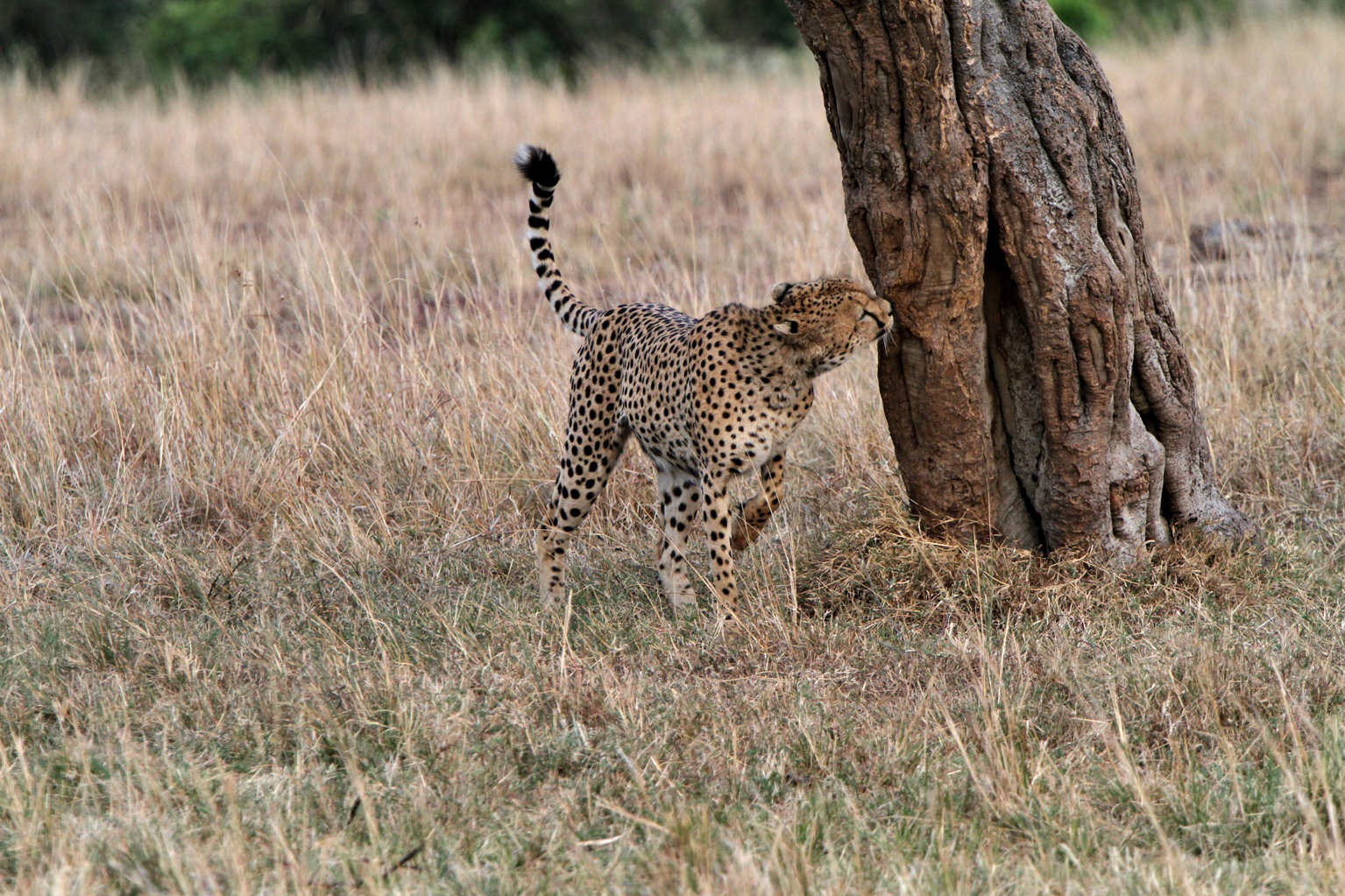
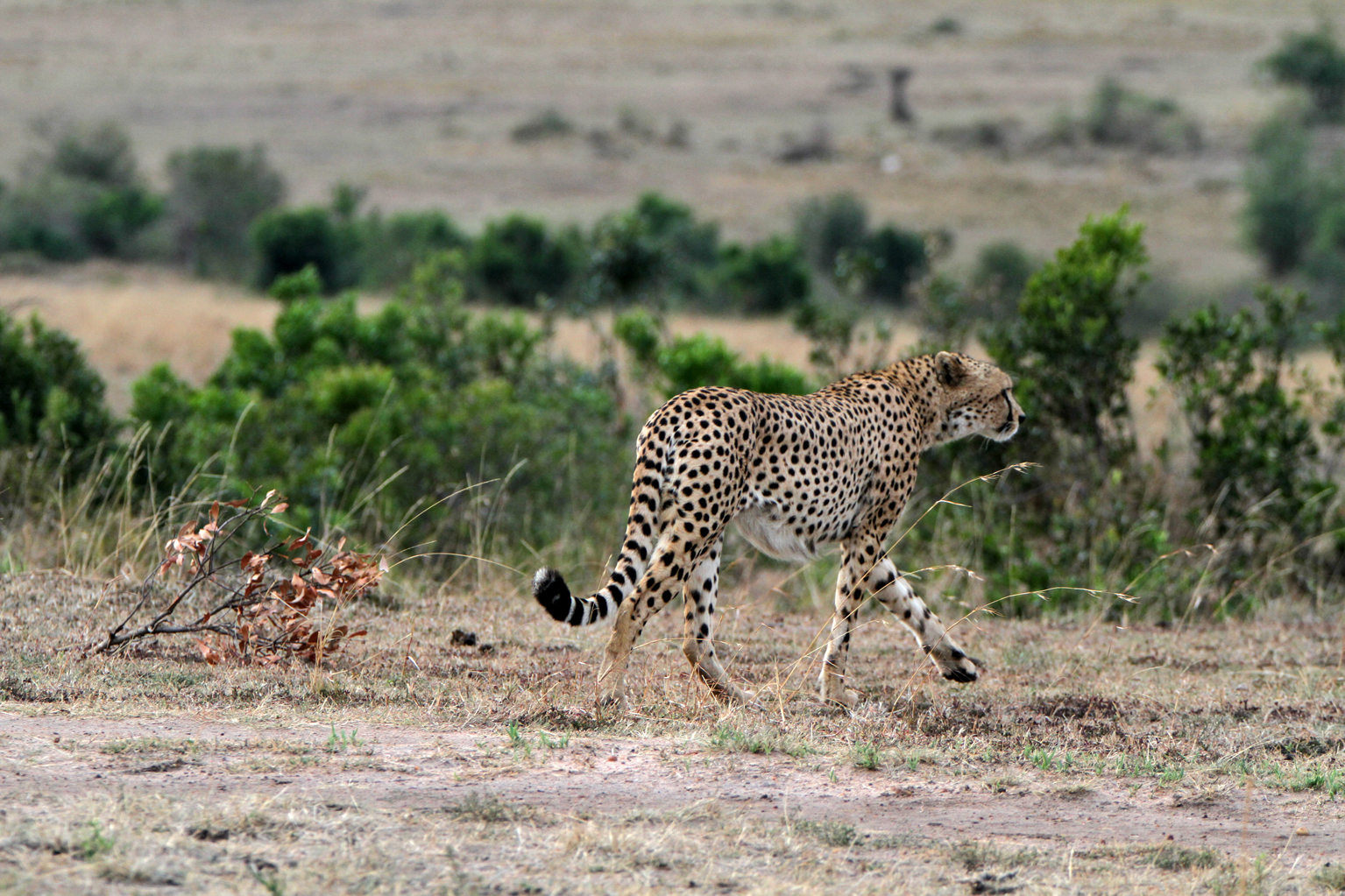
Before heading off to find the Sopa pride we concentrated on the area around the camp as we had seen a male cheetah around for the last two days. We knew this cheetah; it was his territory. Up until around two months ago there were 2 cheetahs’, they were brothers, they hung out together and hunted together, then one day when they were hunting a Topi one of the cheetahs got in the way of the topi’s horns, it gouged the cheetah’s stomach and escaped. After this the lone cheetah disappeared, but now he’s back.
It was so nice to see him again, alone but doing well. When we found him, it was early morning, he was just marking his territory and looking around for breakfast probably. Now he is alone he must target smaller animals to hunt.
When we came upon the Sopa pride what first caught the eye was the bright red colour of the fresh meat in contrast to the yellowish grass of the savannah. The main female of this pride wears a collar, this is so that they can be tracked and monitored, to ensure they are all healthy and thriving. There are no worries on that score, the group of five females are excellent hunters and all their adolescent cubs, all 17 of them, look strong and healthy, they are a perfect example of a successful pride of lions.


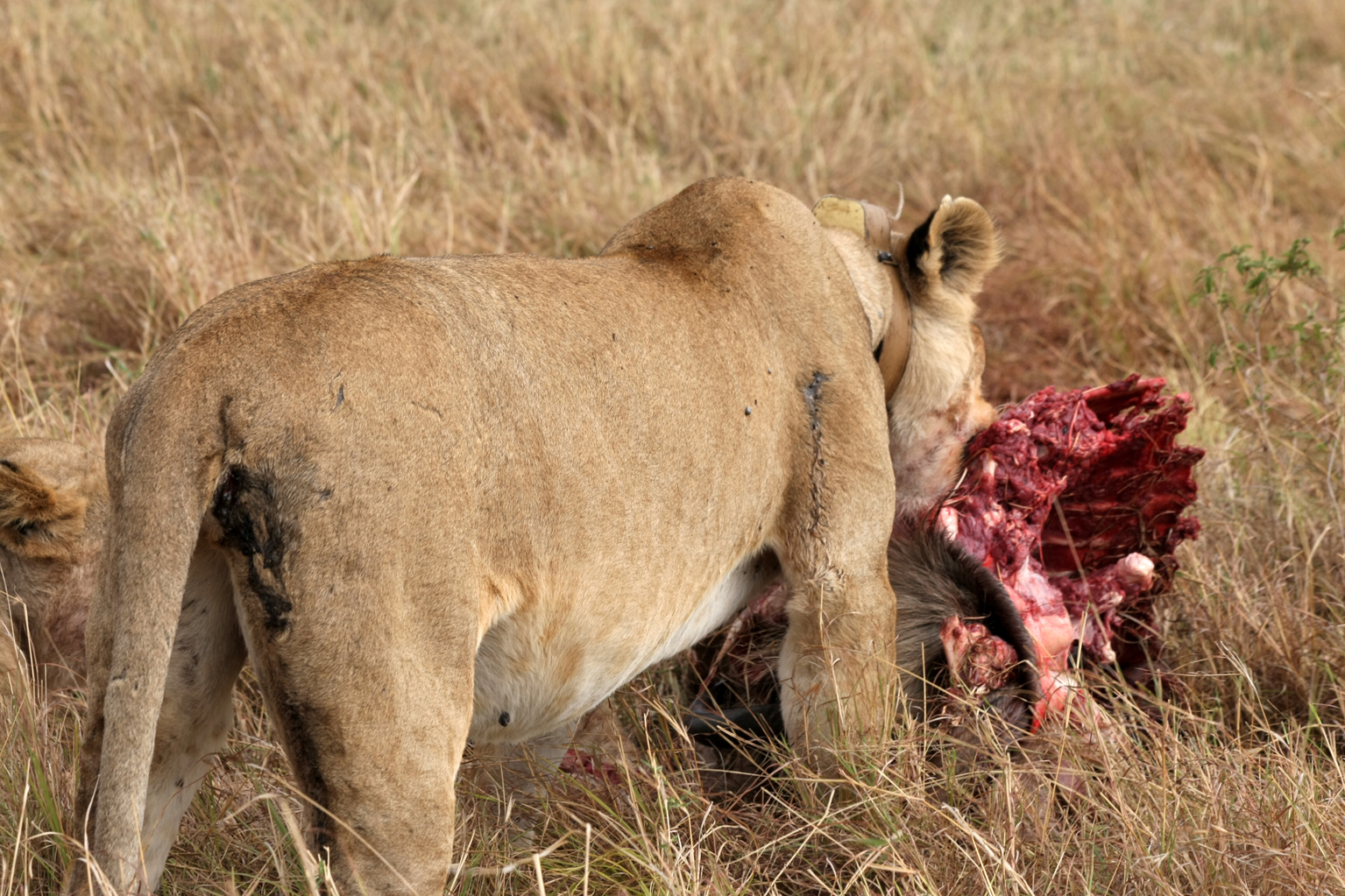
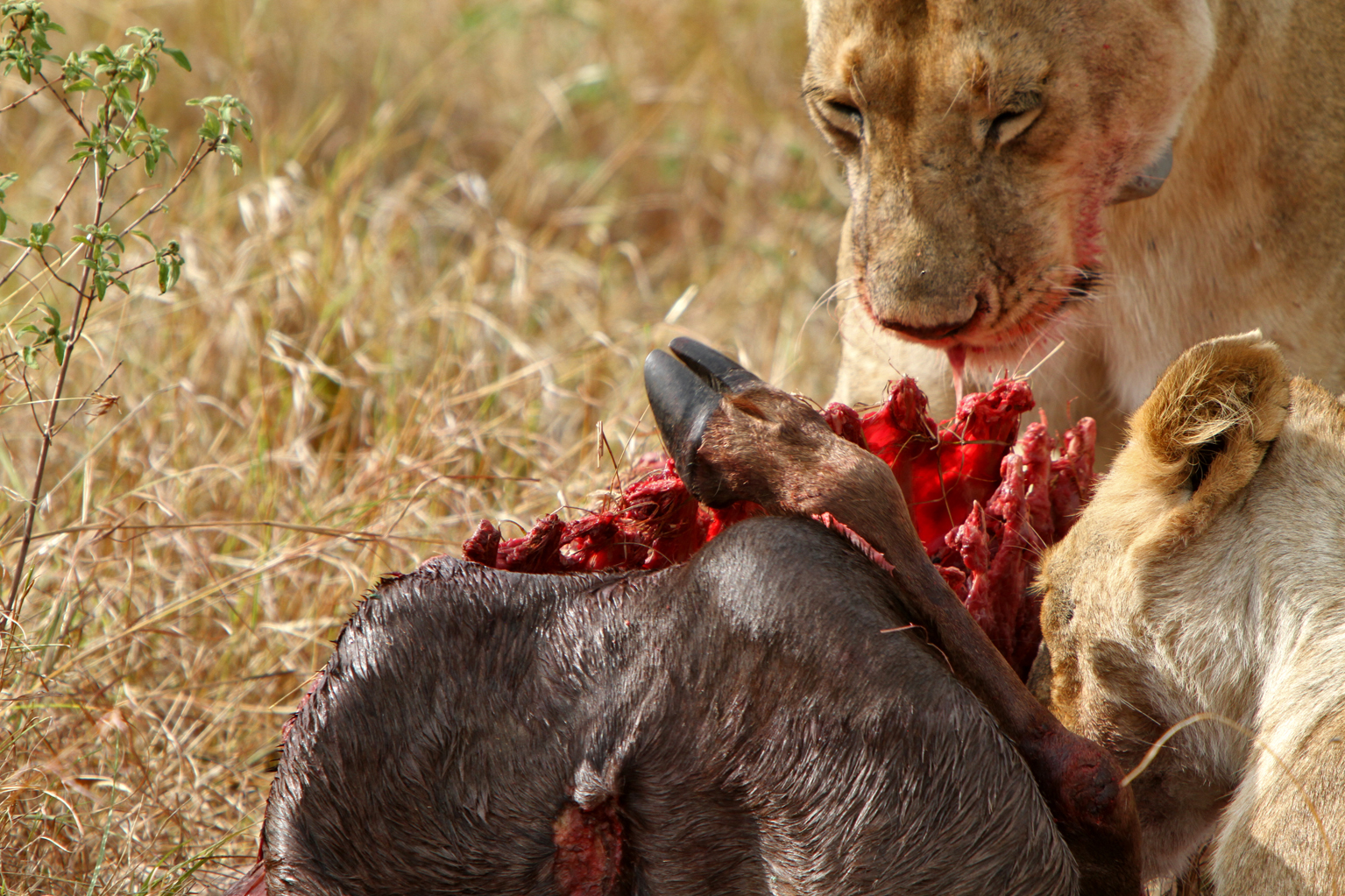
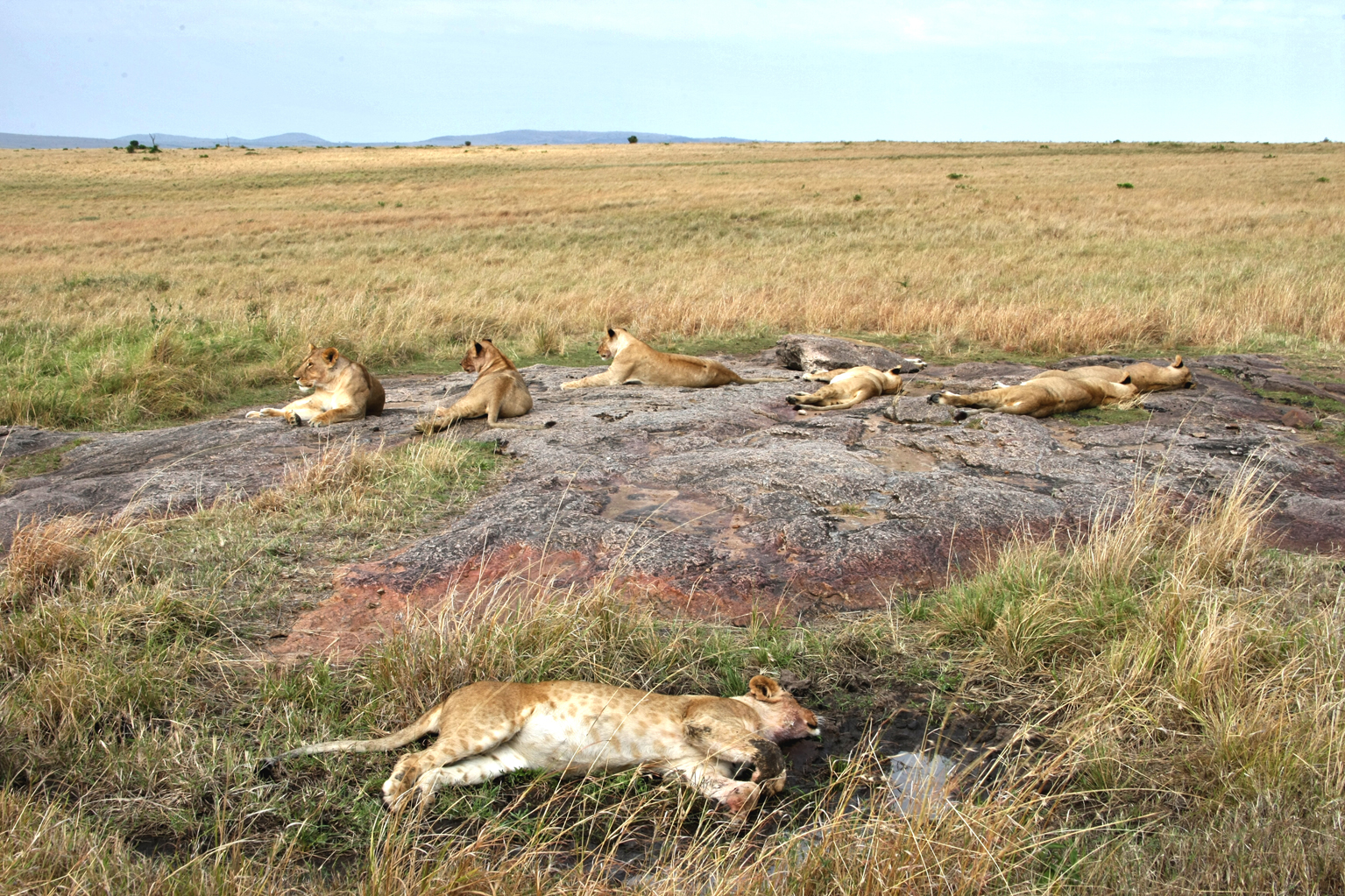

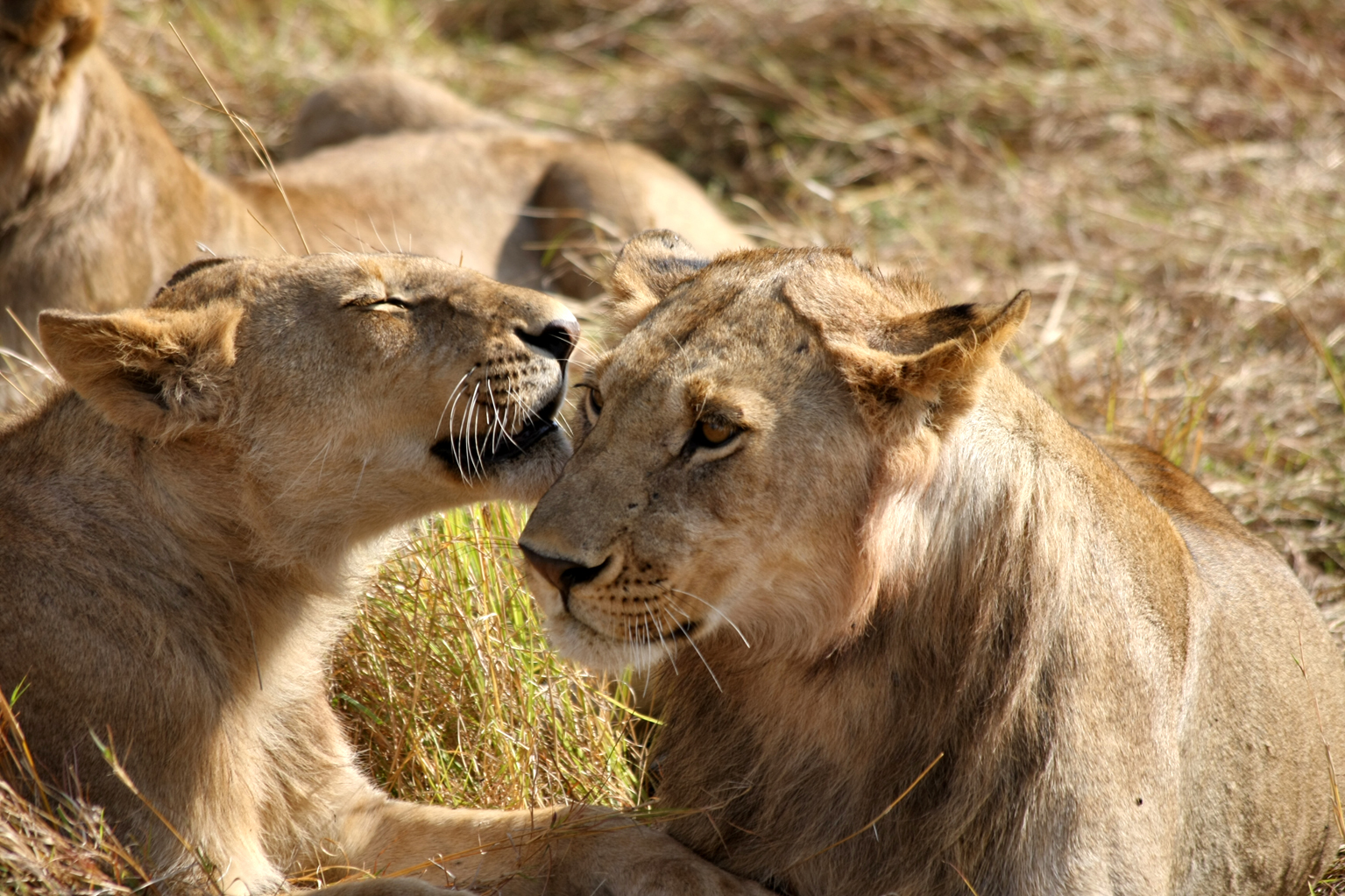


It always fascinates me how strong the bond is between the individual members of the group, they eat together with no squabbling, maybe because there’s no male around. They relax together, play together, and groom one another. There was one incident this morning where a young male wanted to play and his sister didn’t, she put him in his place straight away.
I was also relaxing, just sitting back, watching the peaceful scene around me when one young male lion, I would put him at around one year old as he doesn’t show any signs of a mane starting to grow yet, strolled over to the vehicle. He looked very inquisitive. After checking out one side he then moved around to the back, where he decided to take a bite out of the tyre cover. After satisfying himself that it was neither tasty nor particularly interesting, he then came around the other side to where I was sitting and looked in to see if there was anything more interesting inside.
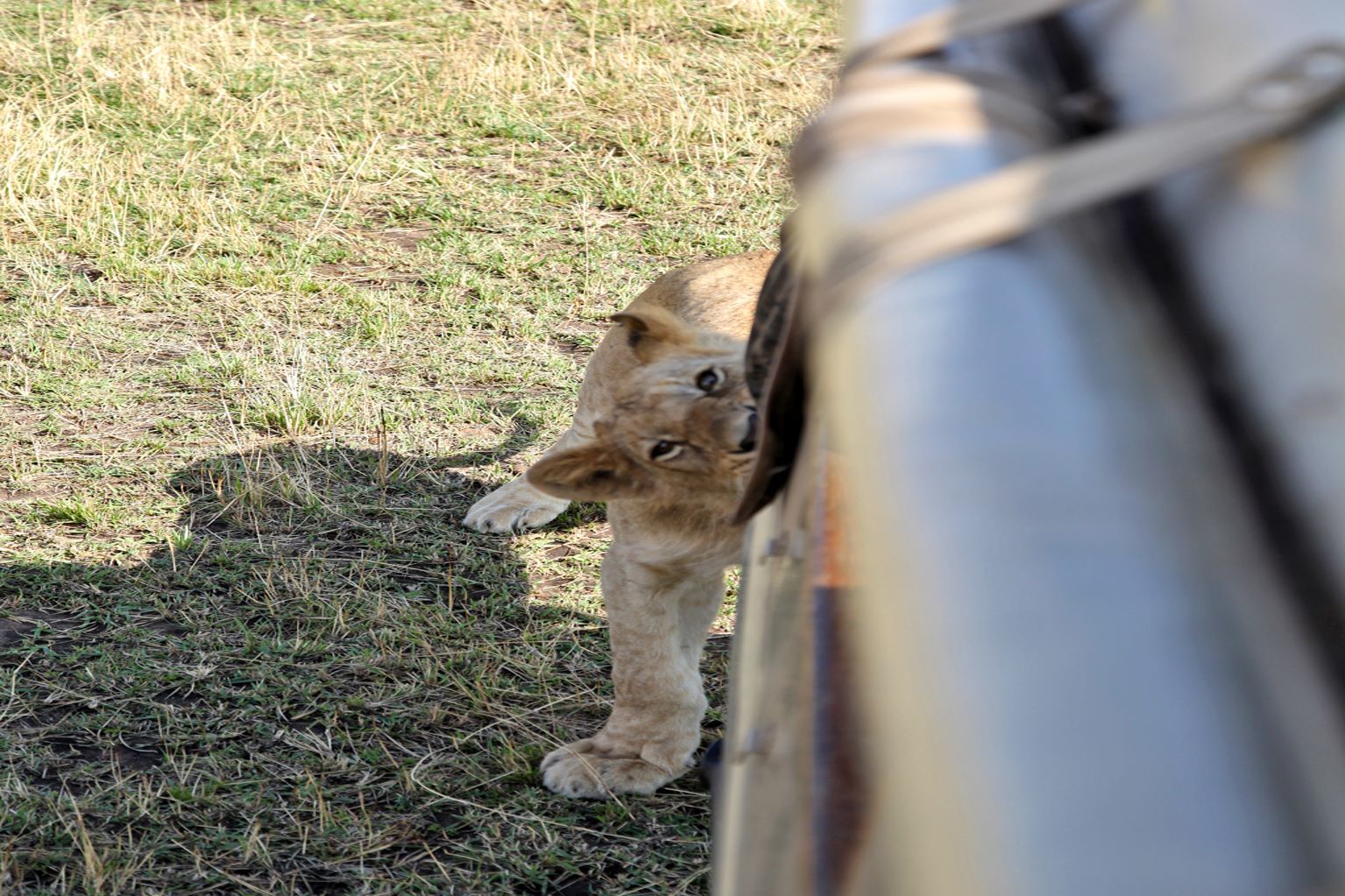
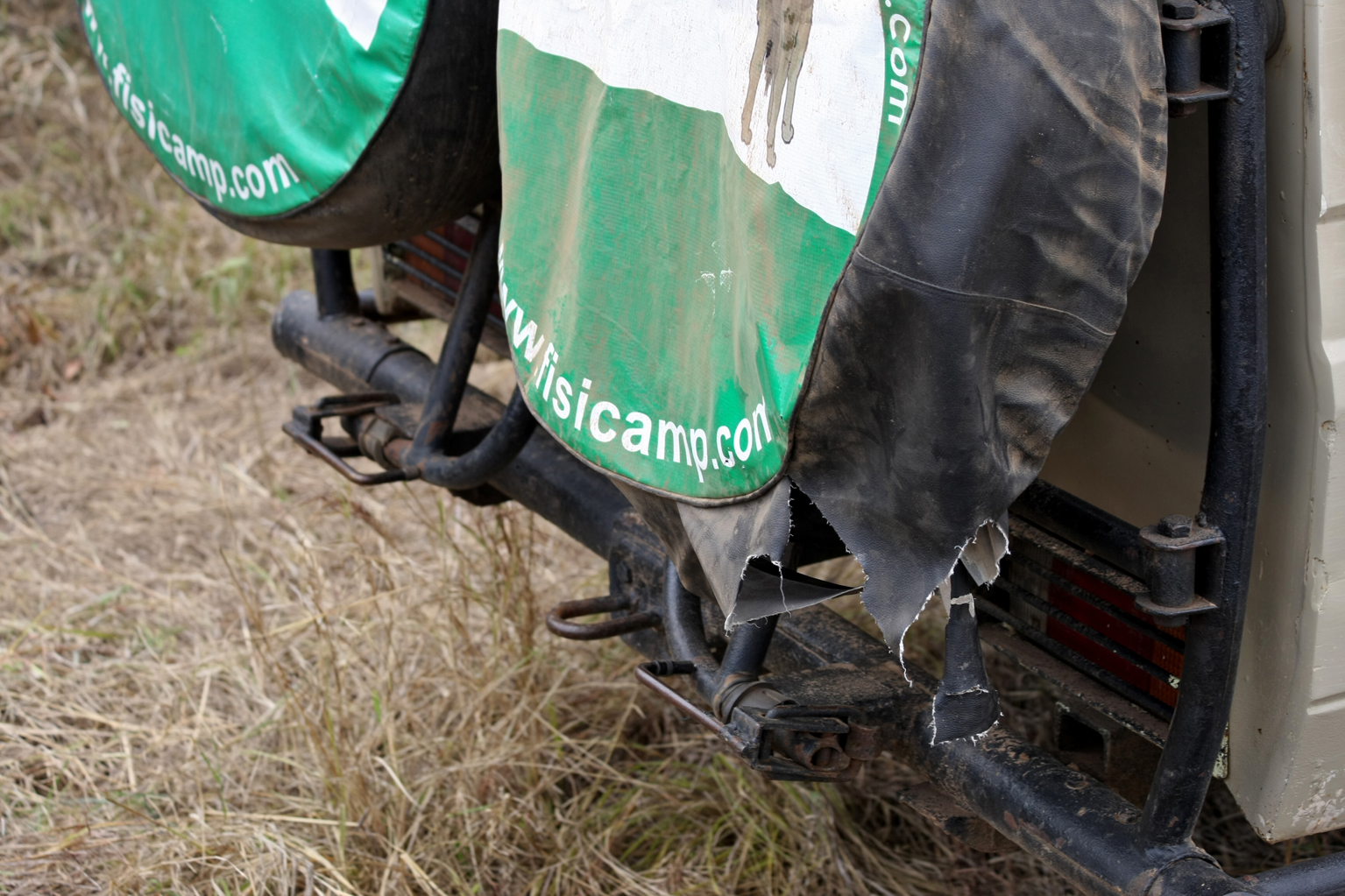
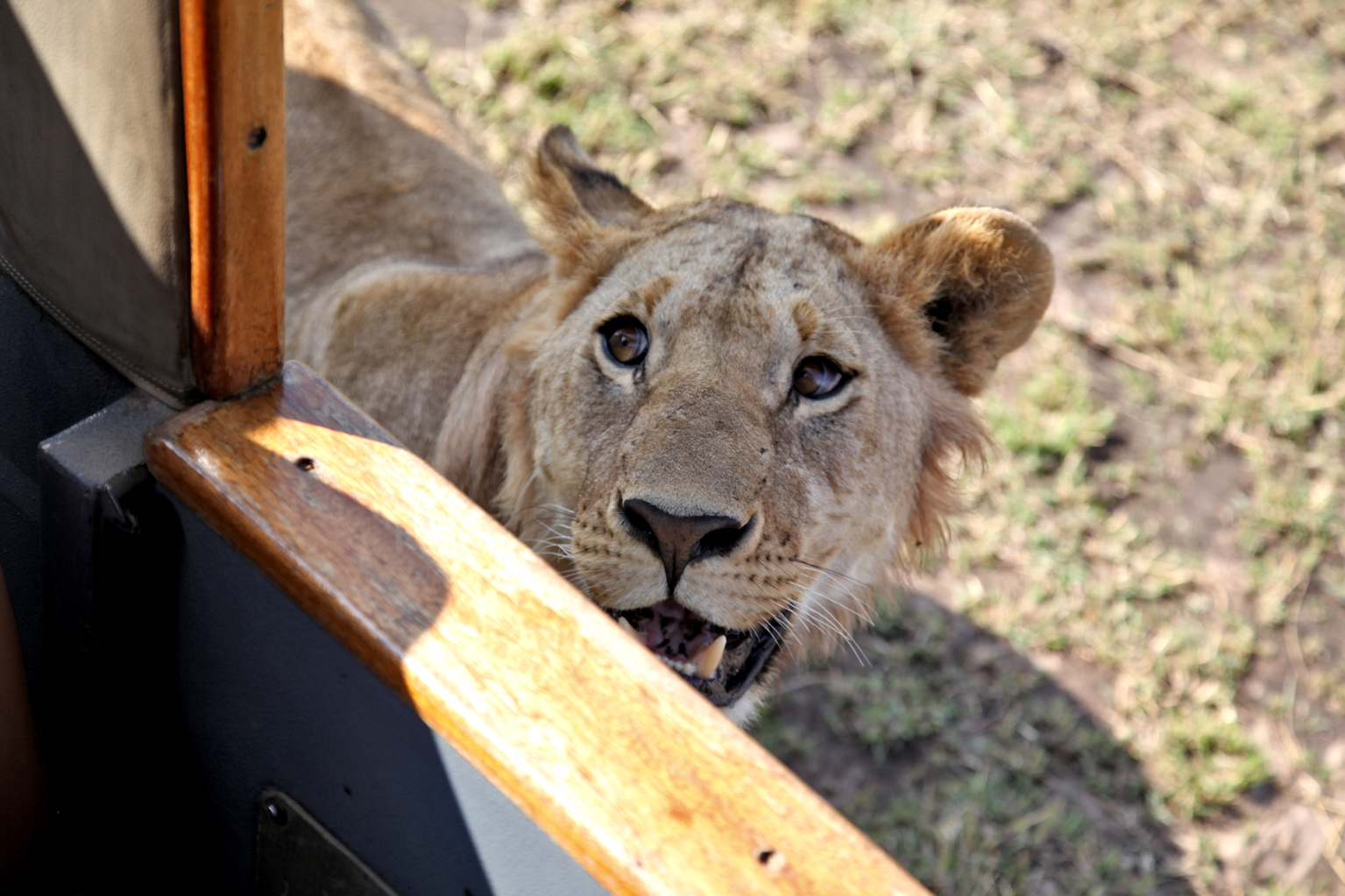

Even though he looked so sweet and innocent it’s essential to understand that these are wild animals, so I moved away from the window, slowly until he decided that there was nothing of interest for him inside either. I imagine he was feeling pretty pleased with himself as he walked over to join his mother.
Lions are generally inactive for around 20 hours a day, mostly during daylight hours, so after being with them for a couple of hours we thought we had seen as much activity as we were going to and decided to leave them to sleep off their meal.
Since we have been following this pride, we had only seen one of the Sopa males, and he was with a female from a different pride, so it’s possible that he won’t return to them. There are three Sopa males altogether, but we have not yet seen the other two. Their territory is very close to the Tanzanian border, so it is possible they are in Tanzania.
As we head back to the camp, we stop to take photos of some of the birds, Ken in particular enjoys photographing the birds. The first one is a Ground Hornbill, you very rarely see them in flight, they prefer to walk, feeding on small mammals and insects as they go. The second is a long-crested Eagle, you can see where the name came from, and the saying eagle eyed, the eyes look very intense as if they don’t miss a thing. Next is the Bateleur Eagle, which is considerably larger, and finally the Goshawk.

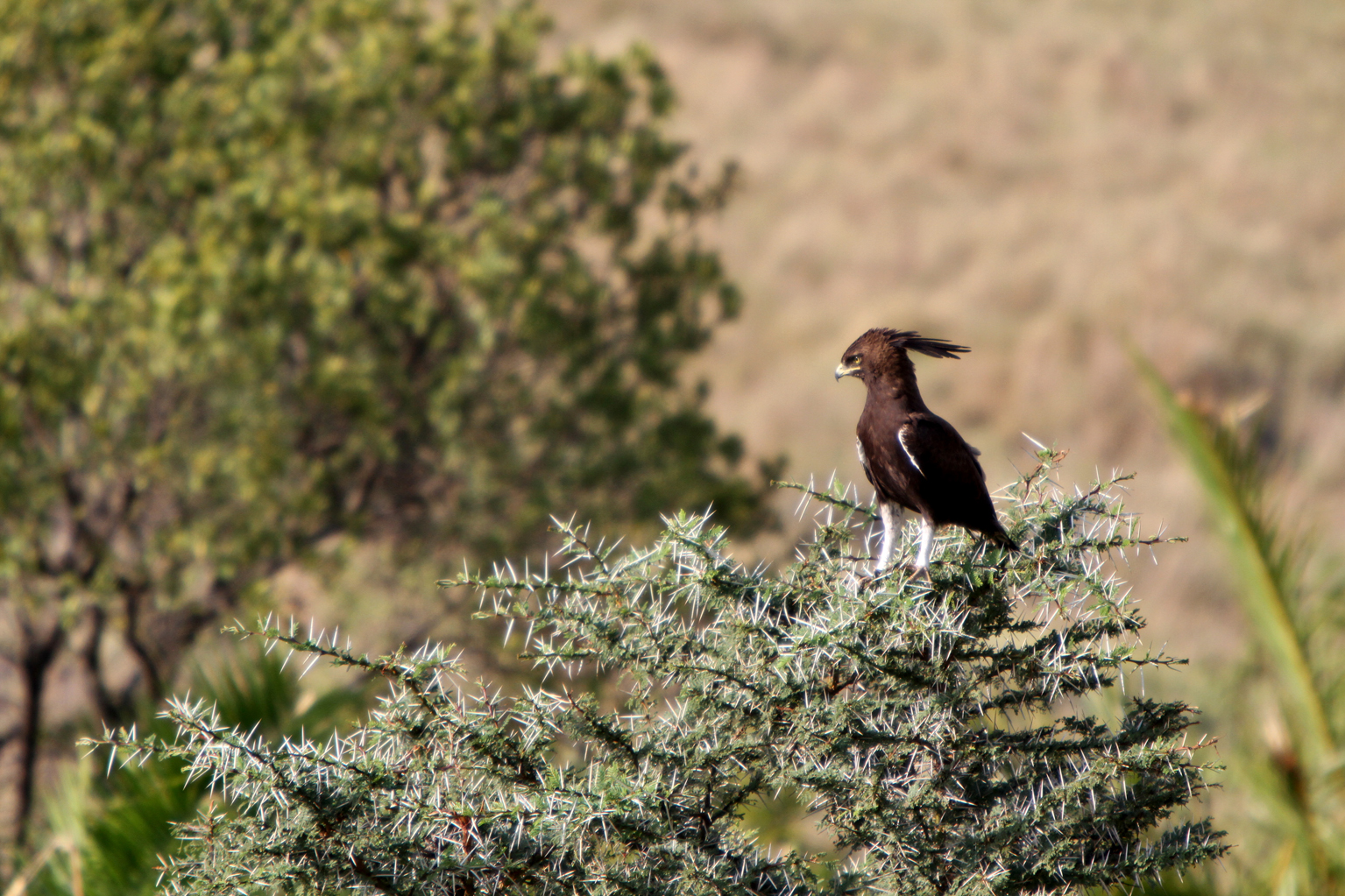
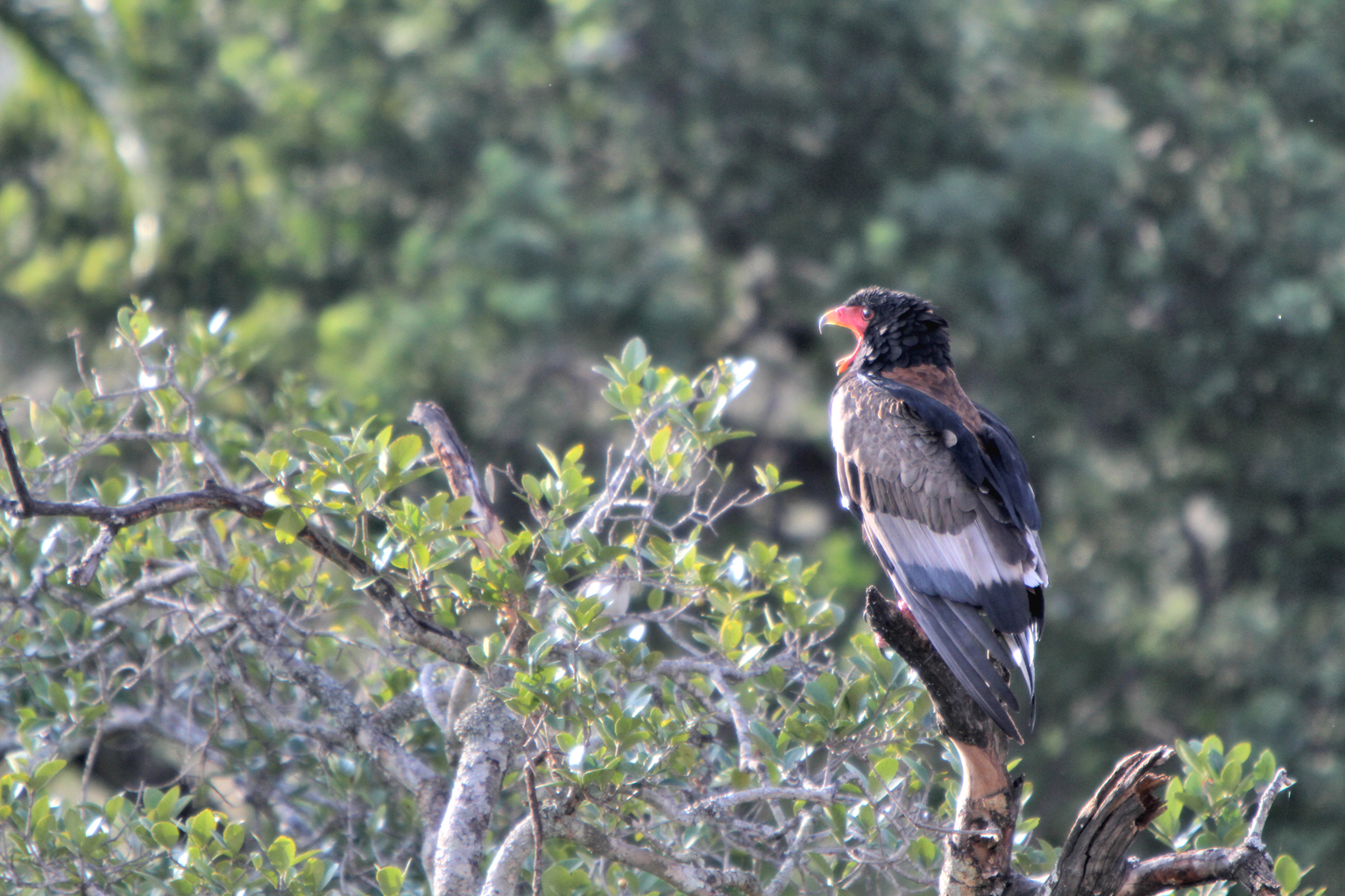



We had only just pulled up to the tree where the Goshawk was resting when he suddenly took off, flying first towards the ground, then upwards with a rat in his claws, the whole thing took just a few seconds. The Hawks and Eagles are very impressive predators.


4 replies on “A cheetah returns”
We saw that lone brother. I remember, because Tony told us that his brother had been killed by a topi. It was in the early morning not long after we left the camp, so that confirms what you said about his territory being not far from the camp.
Great blog, Marie!
So glad you are posting these blogs Marie. Feels like I’m there again. It’s lovely. Thank you.
Love reading these blogs. I should be seeing these beautiful animals close up soon. (Perhaps not too close)
What a fabulous day! Thanks for sharing.